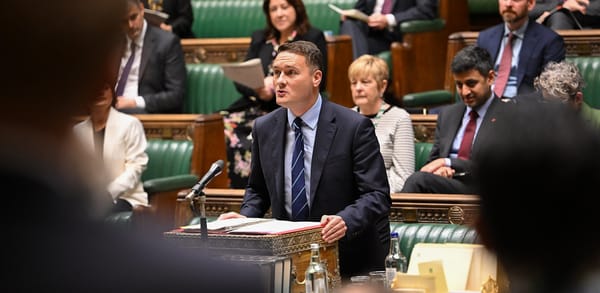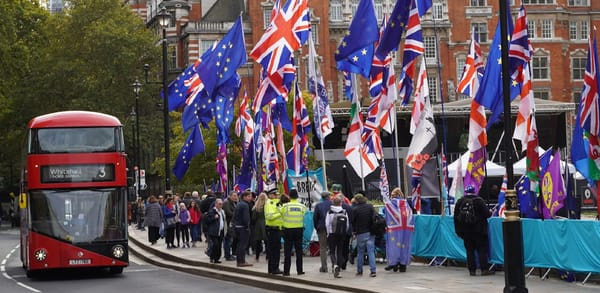Generational Gerrymandering? New voter ID requirements will disenfranchise young people
Attempts to enforce new Voter ID requirements could lead to many thousands of voters being turned away. Here is why it is going to be tough to challenge the Government's ruse to stop young people voting.

Attempts to enforce new Voter ID requirements could lead to many thousands of voters being turned away. Here is why it is going to be tough to challenge the Government's ruse to stop young people voting.
First published: Nov 2022.
T he passing of the Elections Act 2022 in April now means that mandatory photo ID will be required for voting in:
- UK parliamentary elections
- Local elections in England
- Police and crime commissioner elections
There is a very real possibility that attempts to enforce this new requirement could lead to many thousands of voters being turned away at the ballot box – throwing our democratic processes into chaos and disarray as results are challenged and appealed at the courts.
But Good Law Project is most concerned about how the Act could specifically disenfranchise young people. The vast majority of voter IDs approved by the Government are available to older people, whilst very few are targeted at people under 60.
For example, an Older Person’s Bus Pass or 60+ Oyster Card will be acceptable, but an 18+ Oyster Card will not count. Moreover, 16-25 Railcards were approved during a voter ID pilot that took place in Woking in 2018, but they have now been inexplicably excluded by the Government.

CREDIT: ELECTORAL REFORM SOCIETY
This smells a lot like generational gerrymandering. But the Government is justifying its approach on the back of its Equality Impact Assessment on voter ID.
It found that the Act is likely to have a more significant impact on older people and people with disabilities – with figures showing there is less chance that such people will own some of the most common forms of photo ID.
PMP XTRA | Gerrymandering
“The practice of drawing the boundaries of electoral districts in a way that gives one political party an unfair advantage over its rivals (political or partisan gerrymandering) or that dilutes the voting power of members of ethnic or linguistic minority groups (racial gerrymandering).”
A Cabinet Office survey from last year suggests that it is the opposite for young people, with 99% of respondents aged 18-29 saying that they owned some form of photo ID. But, campaign groups have said that these figures are likely to be an overestimate as the survey only took the views of 8,500 people.
In any case, we are not convinced by the Government’s arguments. Its plan to implement mandatory voter ID will significantly push back efforts to increase turnout amongst young people.
When it comes to democratic participation, the generational disparities are clear to see. In the 2019 general election, turnout for 18-34-year-olds was 54% whereas turnout for those aged 65 and over was 77%, with previous elections following a similar trend.
This is also not to mention the real danger that trans people could be turned away if their photo ID does not match their current appearance.
Is there a viable legal case against the Government’s voter ID plans?
Despite Good Law Project’s objections to the plans on human rights grounds, the disappointing reality is that a legal challenge against the Government would be difficult to mount in the first place and unlikely to succeed by the time we reach the English local elections in May 2023.
To engage the courts on this issue, we would need to be able to present a very robust evidence base. In other words, there would need to be substantial investment made into conducting a comprehensive survey which disproves and discredits the Government’s figures on ID ownership.
Even with this evidence base to hand, it is likely that the Court will give the Government a lot of leeway when it comes to determining the balance to be struck in weighing the competing interests of ensuring elections are secure and access to voting.
Overall, a legal challenge is unlikely to become viable until the voter ID requirements have been in force during an election when monitoring can be undertaken on the impact across different demographics.
But if compelling evidence emerged that the Government’s survey data was plainly wrong, we’d look again at a challenge.

A full legal briefing can be read here.
GOING FURTHER:

|

|

|
— AUTHORS —

|
▫ Good Law Project, a not-for-profit campaign organisation that uses the law to protect the interests of the public. ⚖️ GoodLawProjectonly exists thanks to donations from people across the UK. If you’re ina position to support their work, you can do so here. |
Sources
- Text: This piece was originally published in GoodLawProject and re-published in PMP Magazine on 22 November 2022, with the author’s consent. | The author writes in a personal capacity.
- Cover: Adobe Stock/freshidea.






[Read our Comments Guidelines]